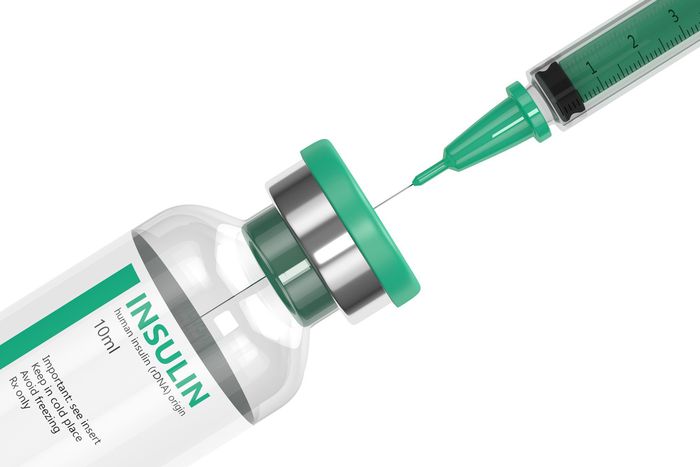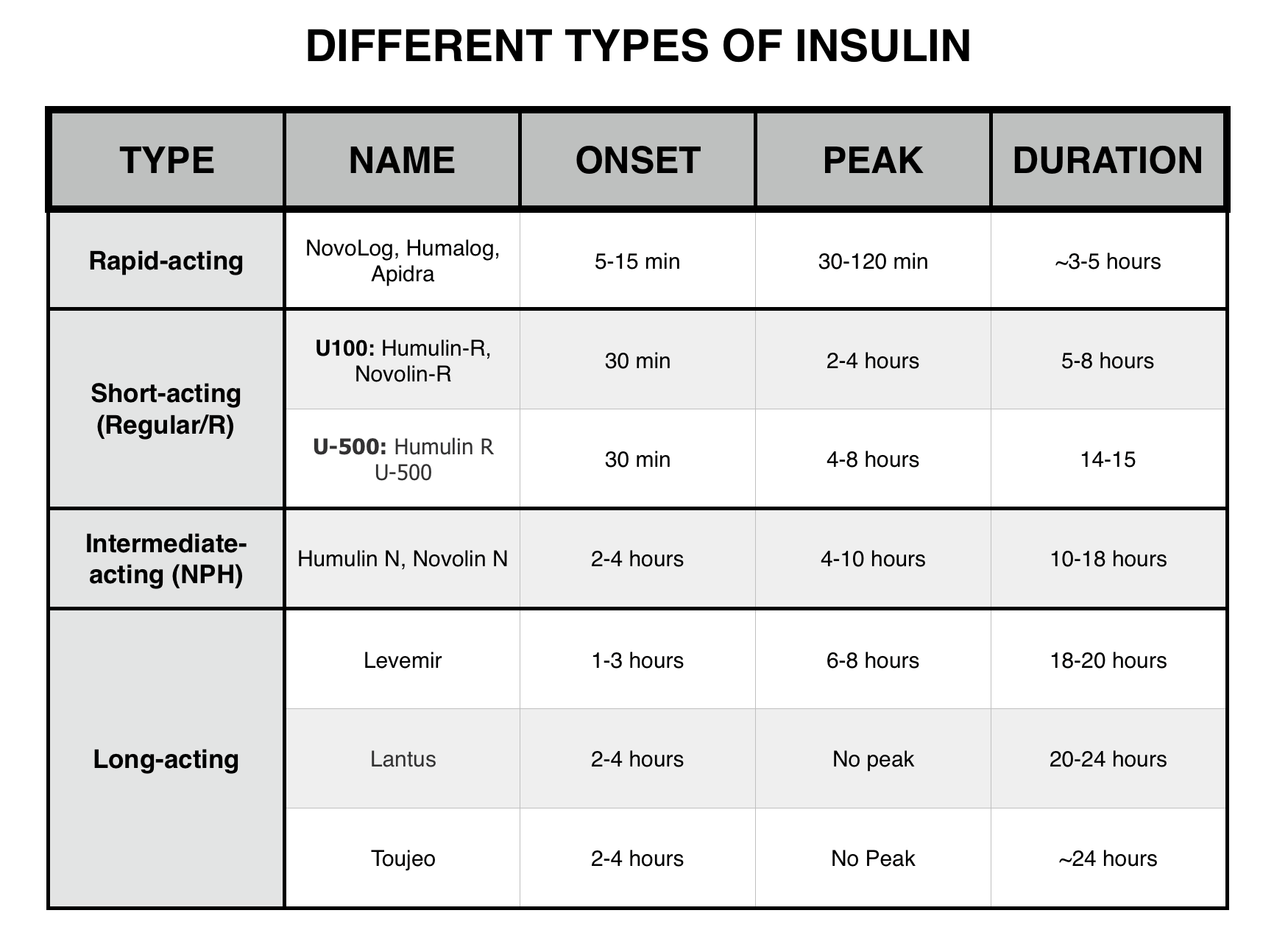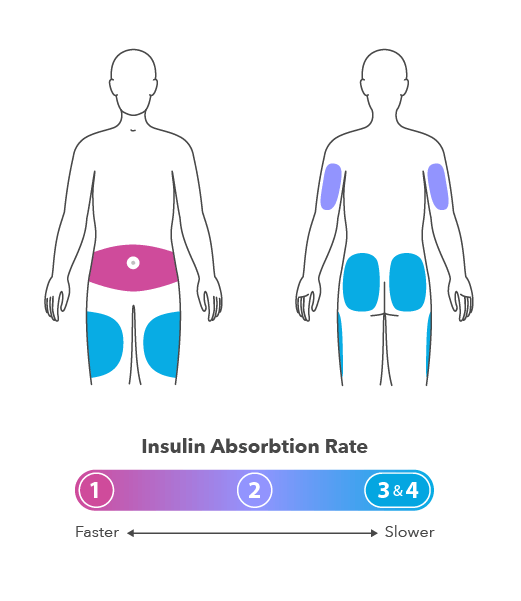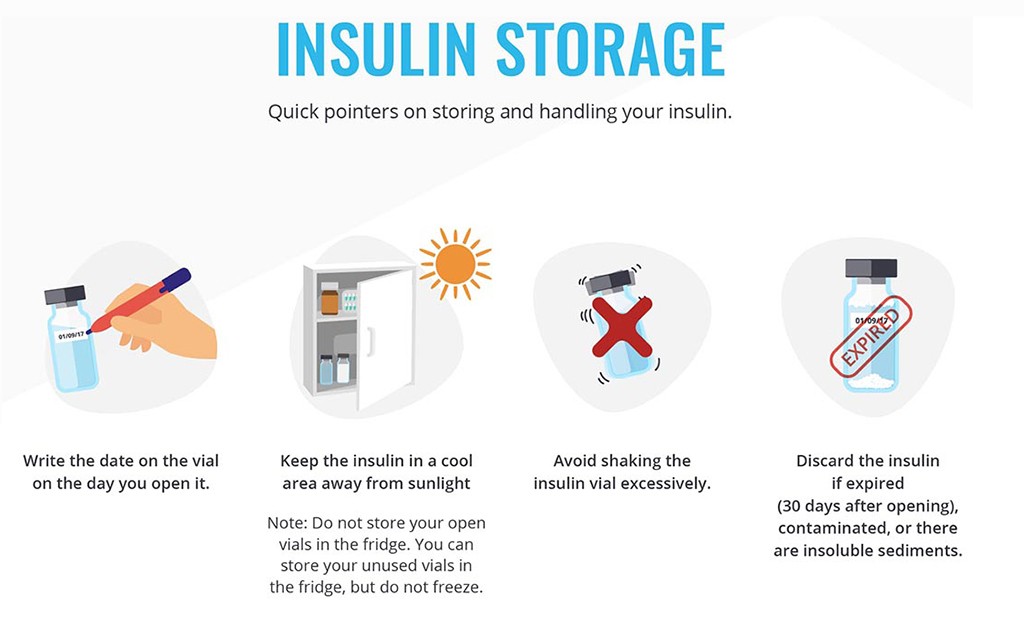Last updated on April 11th, 2022
Manufactured insulin is a lifesaver for people with diabetes. It helps them cover up their body needs for insulin through injections when their body is not producing insulin. There are different types of insulin. The doctor recommends the most suitable types of insulin depending upon your blood sugar levels and body requirements. It is easier to take the insulin shots before meals in the prescribed dosage to keep your blood sugar levels in control. Read this blog to know about insulin therapy for diabetes type-2 treatment.
Diagnoses of diabetes can be overwhelming, especially when you have to manage it with insulin. Insulin therapy for diabetes becomes a need when your pancreas is unable to produce insulin or; your body is not able to use it effectively.
Diabetes type 1 treatment without insulin therapy is not possible. Since the body of diabetes type-1 patients does not produce insulin so, they need insulin shots to control diabetes. In some cases, patients with diabetes type-2 also need to administer insulin.

Characteristics of Insulin For Type 2 Diabetes
Insulin is categorized based on its differences in the following characteristics:
- Onset: It is the length of time insulin takes before it reaches the bloodstream and lowers blood sugar levels.
- Peak: t is the time duration during which the insulin has maximum effectiveness to keep your blood sugar levels low.
- Duration: It is the length of time during which the insulin keeps the blood glucose levels in control.
- Concentration: Insulin is available in different concentrations. In some countries, only one concentration form is available. However, in other countries, you can find insulin in different concentrations.
- Route of delivery: Some types of insulin are intravenous. The other types of insulin are injectable under the skin.
Depending upon these characteristics, different types of insulin are available. Your doctor will prescribe you insulin based on your body needs and blood glucose levels. Taking insulin therapy for diabetes treatment without consulting doctor can be dangerous.
Also Read: Is Banana Good For Diabetes?

Types of Insulin For Diabetes Treatment
There are different types of insulin that you can take. Different types of insulin act at different speeds and serves different purposes to bring down blood sugar levels. Sometimes, one insulin is mix with the other to give effective results on your blood sugar levels. The different types of insulin are:
- Rapid-acting insulin: his type of insulin has the least onset time. It means it shows results with immediate effect. When you inject rapid-acting insulin, it starts to lower your blood glucose levels within 15 minutes. Take this insulin right before a meal. The sooner it shows results after entering your body, the sooner it leaves your body. The effect of this type of insulin lasts for around 2-4 hours only.
- Short-acting insulin: This type of insulin cover up your insulin needs at mealtime. However, you have to inject it a little bit before the meal than rapid-acting insulin. It begins to start its work 30 minutes after injection. Therefore, you need to inject short-acting insulin 30 minutes before meals. Its effect is from two to five hours after insulin injection for diabetes. It lasts up to six or eight hours. It imitates the bolus secretion to control your diabetes.
- Intermediate-acting insulin: Immediate-acting insulin is now less commonly available. However, the doctor may recommend you this insulin. It starts its work usually late than the short-acting insulin but stays in your body for a long time. Generally, it has an effect on your body for almost 12 hours a day.
- Long-acting insulin: It is the insulin type that is absorbed slowly. Therefore, it has the minimum peak effect but has the maximum stability. It lasts in your body for most of the day. Long-lasting insulin helps control blood sugar levels overnight while fasting, and between meals. Patients need to inject this type of insulin once a day only.
- Pre-mixed insulin: As the name suggests, this type of insulin contains the pre-mix of the above types of insulin in a single vial. It constitutes a pre-mix combination of intermediate-acting insulin with either a rapid onset-fast acting insulin or short-acting insulin. Pre-mixed insulin has a cloudy appearance. Patients need to take this insulin between 10 minutes and 35 minutes before meals. This type of insulin ensures to cover your insulin needs in the right way. These are some insulin therapy for diabetes treatment.
Dosage of Insulin Injection For Type 1 or Type 2 Diabetes
Summary
Needle and syringe are the traditional but the least expensive method to take insulin. Insulin pens are stylish and easy to carry insulin administration devices. You can carry an insulin pen along with you so that you can take insulin whenever your body needs it. Insulin pumps are the most convenient way to take your insulin dose. They are a bit expensive, but you will not have to carry insulin injections or set a reminder to take the insulin shots.
Though it is easier to bring down your blood glucose levels close to the normal through insulin, it is necessary to take insulin in the correct dosage. Generally, insulin is available in two concentrations. One is 100 units of insulin per mL (U-100) and, the other is 500 units of insulin per mL (U-500). The patient’s metabolic needs, blood glucose monitoring results, and glycemic goals are the factors that determine his/her dosage of insulin.
Ways to Take Insulin Injections to Control Diabetes
There are different ways to take insulin to control your blood glucose levels. These are:
- Needle and syringe: Some people get insulin into their bloodstream with the help of a needle and syringe. You need to draw up a dose of insulin from the vial into the syringe and inject it into your belly, thighs, upper arm, or buttocks. This the traditional method to take insulin.
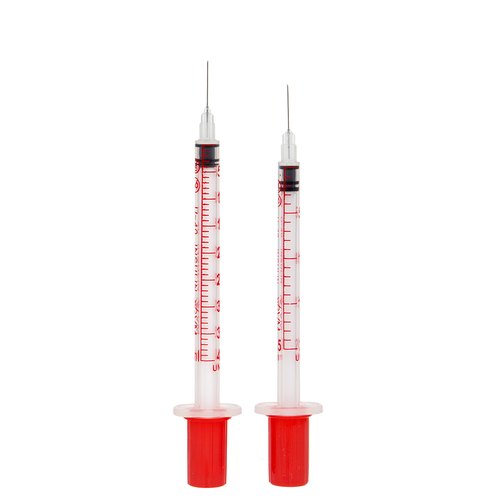
- Insulin Pump: It is a small and handy device that gives you a dose of insulin throughout the day. You need to wear this kind of pump on a belt or a pocket. It has a small plastic tube and a fine needle that you have to insert under your skin. You can administer the dosage of insulin easily through this pump at mealtime. The insulin pump prices, a bit higher than the other means of administering insulin.
- Insulin Pen: The latest ways to administer insulin are through a cartridge system or pre-filled insulin pens. It is in the shape of a pen that has a needle at one end. Insulin pens come filled with insulin and, they are disposable. In some designs of insulin pens, you can add the insulin cartridge. You can later replace it after use.
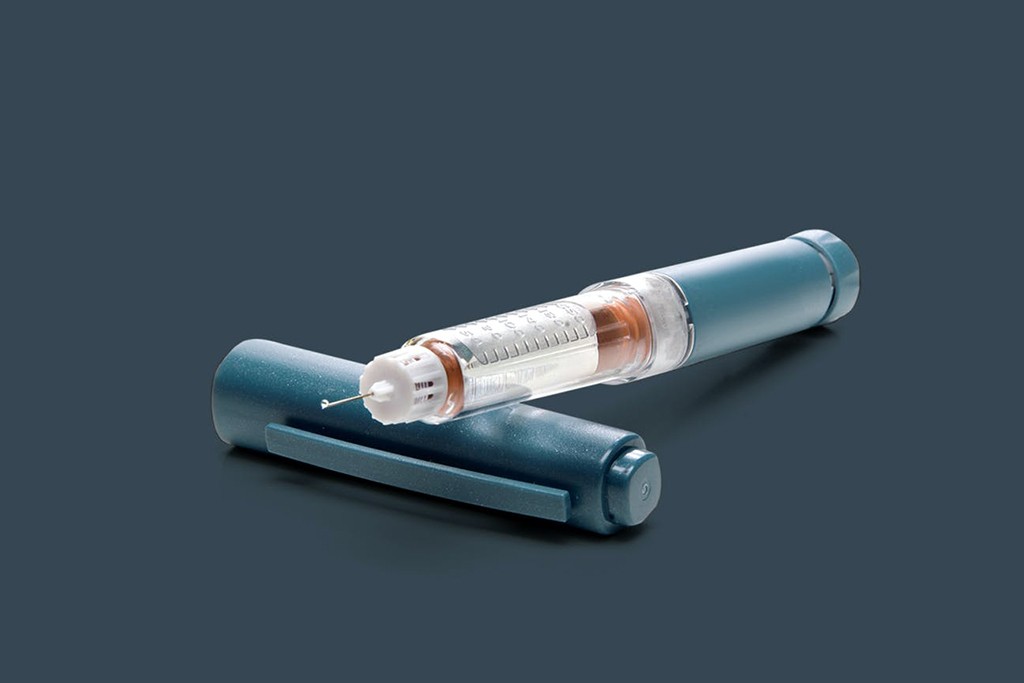
- Insulin Inhalers: There are special inhalers available for administering insulin. These inhalers convert the dry insulin pills using compressed air. It, thus, provides the particles for inhaling. In some insulin inhalers, the patients directly inhale the insulin dose in powder form. In this way, the insulin powder reaches their lungs from the mouth. Well, insulin inhalers are not much successful.
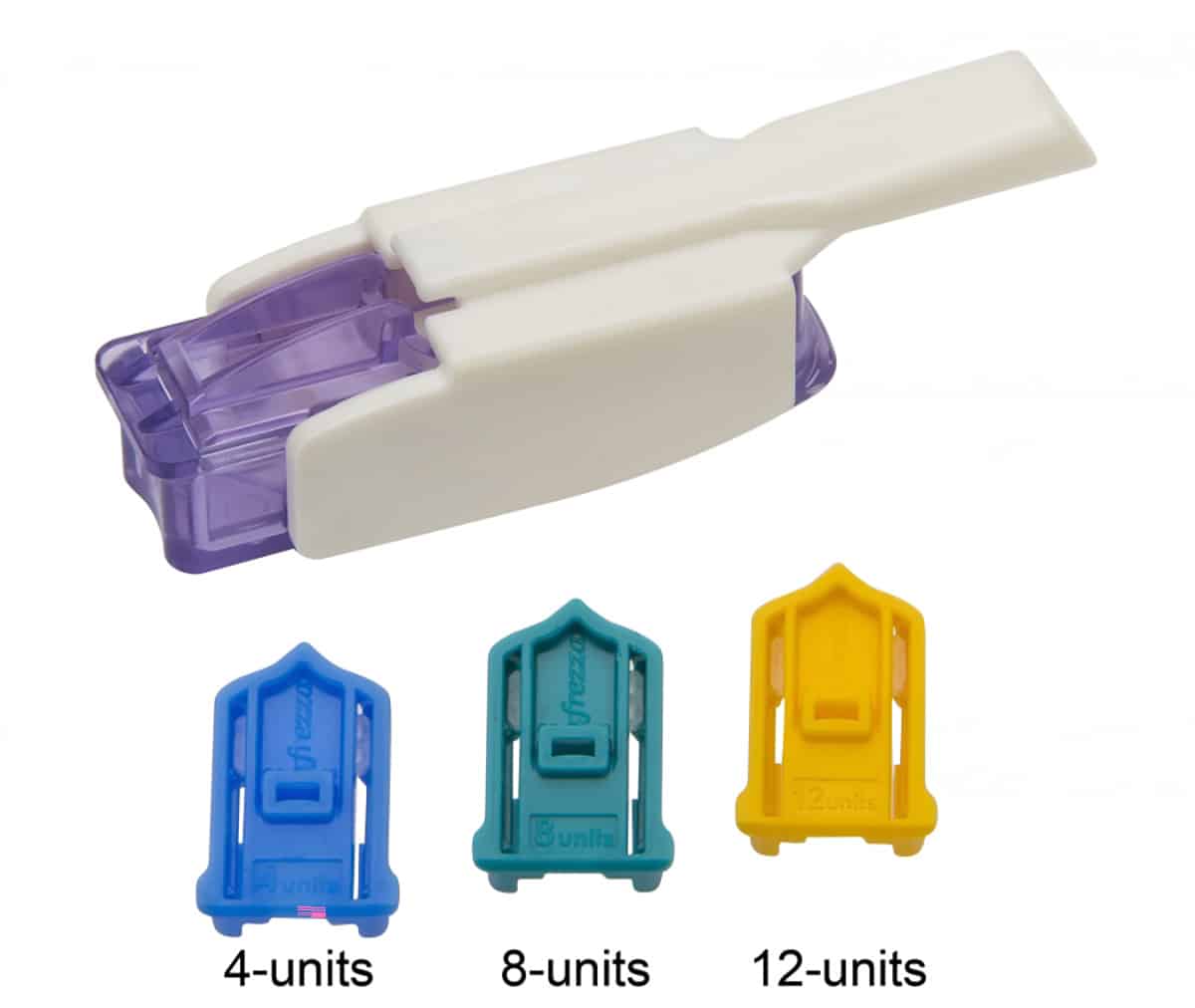
DIY Steps to Inject Insulin to Manage Blood Glucose Levels
Summary
Taking insulin in the right way is vital. It prevents the mess of preparing insulin injections and administering the doses. Also, the patients can learn self-administration of insulin and remain self-dependent.
Injecting insulin is quite simple and easy. Your doctor can explain to you the dosage and how to inject the insulin properly. You need to follow the instructions step by step to inject insulin if using a vial and syringe.
- Step 1: The first step is to gather all the supplies before you start. Have a Soap and water or hand sanitizer, alcohol wipes, insulin vial, insulin syringe, and a container to dispose of the needle.
- Step 2: Sanitize your hand and gently roll the insulin vial between your hands. It will mix the insulin. Do not shake the vial.
- Step 3: Take the insulin needle. Pull back the plunger till the marking of your insulin dose.
- Step 4: Put the needle into the vial and push the plunger down. Now turn the vial upside down and pull the plunger. It will fill the syringe to the desired dosage. Make sure to remove the bubble, if any.
- Step 5: Clean the injection site with an alcohol wipe and pinch a small portion of the skin at the site. Now insert the needle at an angle of 45 degrees and slowly inject the insulin. Once you have injected the insulin, pull the inserted needle out, and throw it away in a sharp container.
Also Read: Best Glucometer in India
Insulin Injection Sites
You cannot inject insulin anywhere in your body. The parts of your body that has more fat under the skin are suitable to inject insulin. The abdomen, thighs, upper arms, and buttocks are the common insulin injection sites. These parts of your body absorb insulin quickly. The doctor recommends to injecting insulin in the same area of your body for the same kind of meal. It will maintain the consistency of absorption of insulin in your body. Also, your skin will look attractive.
Some Tips to Remember While Taking Insulin
There are some tips to remember while taking insulin. It helps you to get the maximum benefits of insulin and avoid the side effects. The main points for taking insulin include:
- Taking too much insulin can lead to low blood sugar levels.
- Low dosage will not give you effective results.
- Make sure never to mix or dilute insulin.
- Never use the expired insulin.
- Keep rotating your injection site to avoid lumpy skin.
- Eat something after 30 minutes of administering insulin.
- Keep checking your body for insulin resistance. In that case, your doctor will increase your dosage.
- Follow a healthy lifestyle routine even if you are taking insulin.
Also Read: Is Rice Good for Diabetics? | Check Glycemic Index of Rice Before Eating
Storage of Insulin Injections For Diabetes
If you or someone in your family is taking insulin regularly for managing diabetes, you may need to stock up insulin at your home. There are few guidelines to follow to store insulin properly. The storage guidelines include:
- Keep the insulin away from sunlight and heat.
- Do not freeze the insulin. You can keep the unused vials and insulin pens in the refrigerator
- Avoid shaking the vial.
- Insulin gets expired after 30 days of opening the vial. Hence, discard the expired insulin immediately.
- Keep insulin away from the reach of children.
Keep Monitoring Your Blood Glucose Levels
Many people with diabetes, who need to take insulin for managing diabetes, are not serious about monitoring their blood glucose levels. Some of them have a misconception that insulin keeps their blood glucose levels in control forever. However, in reality, diabetes patients taking insulin should regularly check their blood sugar levels. It helps them to avoid the side effect of insulin therapy for diabetes.
Side Effects of Insulin Therapy For Type 2 Diabetes
The most common side effect of insulin is hypoglycaemia or low blood sugar levels. It occurs when you administer more insulin than your body requires. The common symptoms of hypoglycaemia include sweating, dizziness, blurred vision, hunger, nausea, and lack of coordination. If you experience these symptoms, immediately eat something sweet like candy, chocolate, sugar syrup, or a glass of regular juice. Weight gain is also a side effect in some patients taking insulin.
Also Read: Is Walnut Good For Diabetes?
FAQs:
Can I take insulin as a pill?
Insulin pills are yet not available in the market. You can inhale or inject insulin to keep your blood sugar levels in control. According to some research, if you take insulin as pills or tablets, it will damage your digestive system before it starts functioning.
Can I control my diabetes-type-2 with insulin?
Generally, people with diabetes type-2 need to take insulin when diabetes medications are not effective. They need insulin for the short term only and, after that, they can continue with their diabetes medications. However, they can manage their diabetes through lifestyle management like diet control and exercise.
Do I need to take insulin and diabetes medications together?
The doctor recommends insulin dosage based on the type of diabetes, how long you have had it, and how much insulin your body is producing. Some diabetes medications easily interact with insulin. Hence, consult a doctor whether you can take insulin and diabetes medications together or not. Most of the time, insulin and medicines together lead to hypoglycemia or low blood sugar levels that are again fatal for your health.
Will I need to take insulin forever?
People with diabetes type-1 will need to take insulin forever. It is because their body does not produce insulin anymore. They may need to take insulin several times a day. However, people with diabetes type-2 may need insulin in severe conditions. They need insulin during sudden spikes in the sugar levels due to some medications, illness, or pregnancy. They need insulin until their health issue is resolved.
Why should I need to take insulin?
You need to take insulin when dieting, exercising, and oral insulin medications are no longer effective in controlling your blood sugar levels. Insulin helps you to keep your blood sugar levels near the normal range. It prevents the high blood sugar levels from interfering with the functionality of the other organs that can lead to kidney damage, heart attack, etc.
References:
- https://www.diabetes.co.uk/insulin/injection-sites.html
- https://dtc.ucsf.edu/types-of-diabetes/type2/treatment-of-type-2-diabetes/medications-and-therapies/type-2-insulin-rx/types-of-insulin/
- https://www.healthline.com/health/type-2-diabetes/insulin-switch-pros-cons#alternative-treatments
Last Updated on by Dr. Damanjit Duggal
Disclaimer
This site provides educational content; however, it is not a substitute for professional medical guidance. Readers should consult their healthcare professional for personalised guidance. We work hard to provide accurate and helpful information. Your well-being is important to us, and we value your feedback. To learn more, visit our editorial policy page for details on our content guidelines and the content creation process.

 English
English
